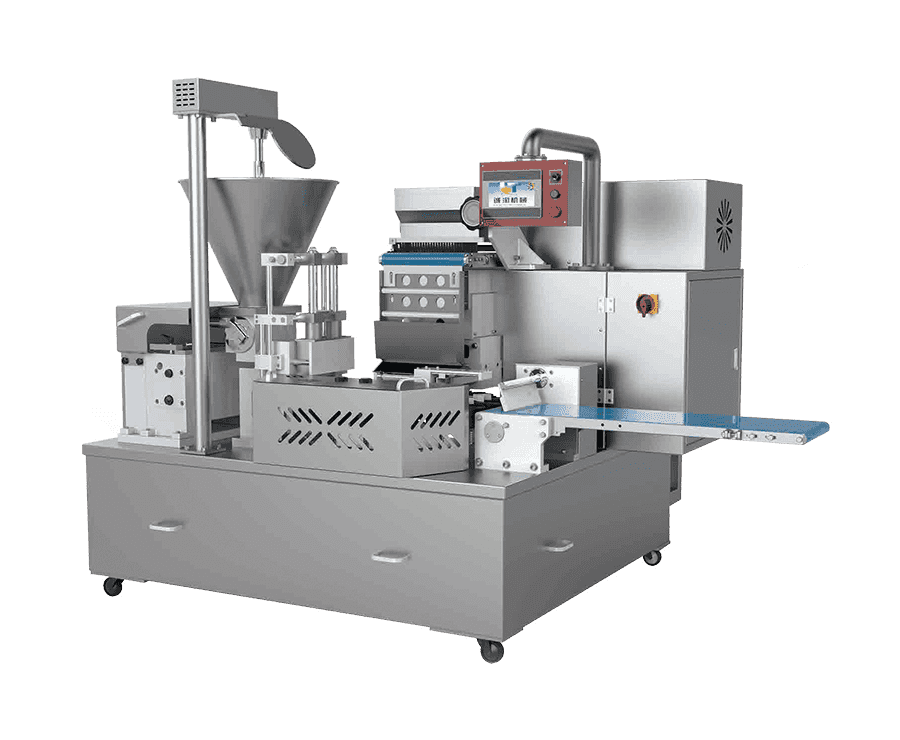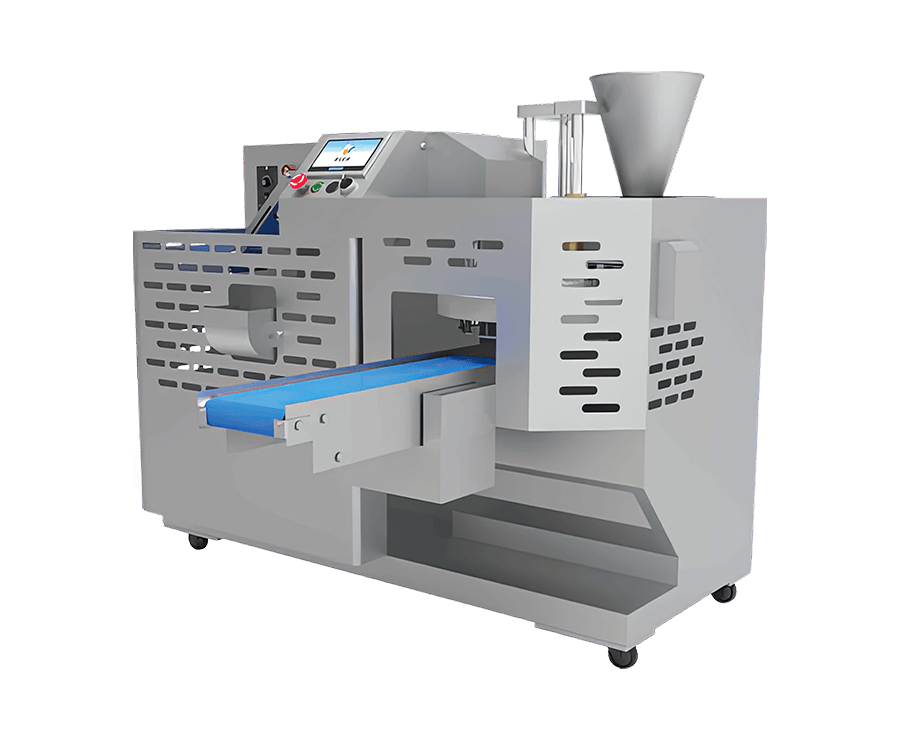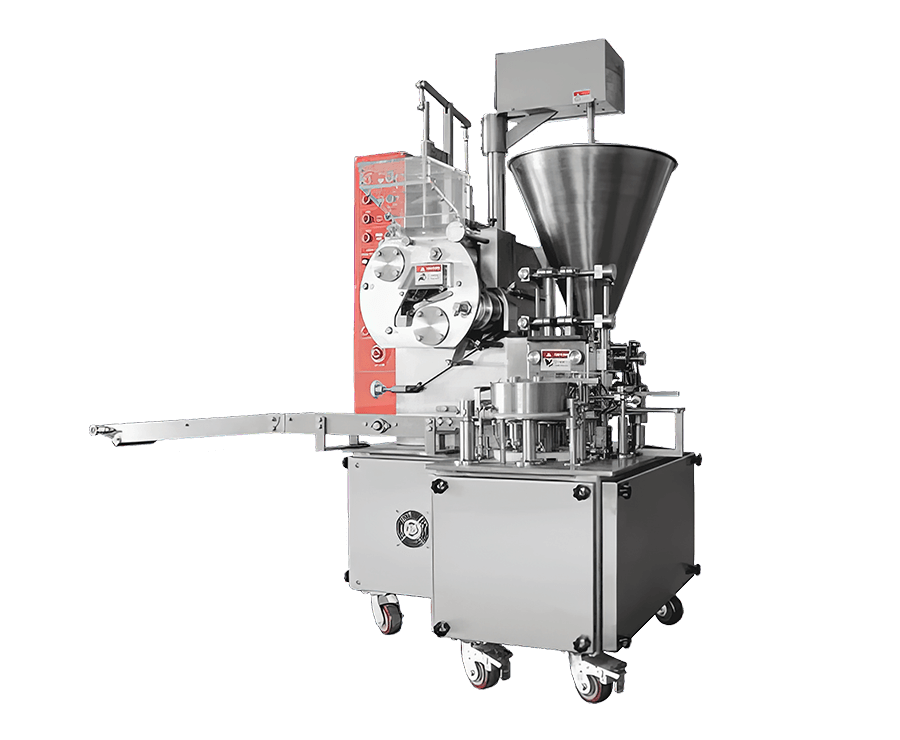Machine-Friendly Siu Mai Recipes: 3 Delicious, Scalable Recipes + Machine Settings
Why choose automated machines for siu mai?
Automated siu mai machines convert handcrafted skills into repeatable production: consistent portioning, faster throughput, and less operator fatigue. For small commissaries and larger factories alike, machines reduce cycle-to-cycle variability and make it easier to meet food-safety standards while scaling popular flavors. This article focuses on practical, machine-ready recipes and the exact operational parameters you can use to get excellent texture, wrapper integrity, and flavor from automated forming and filling equipment.
Key machine considerations before you start
Wrapper type, size, and stiffness
Use machine-grade wonton wrappers: generally 55–70 mm diameter (often sold as 60 mm or 65 mm). Thicker, slightly drier wrappers (not wet from plastic) hold shape better in high-speed presses. If your machine has an adjustable collar, set for the wrapper diameter you select and test one-run samples for tear and sealing.
Filling viscosity and temperature
Filling viscosity controls clean dosing and shape retention. Aim for a filling temperature of 6–12°C (43–54°F) for pork-shrimp blends to maintain bind and prevent fat smearing. If your machine has a heated hopper, keep it off for high-fat fillings; use chilled hoppers or refrigerated conveyors for best results.
Portion weight and cycle speed
Common portion sizes: 18–24 g for restaurant siu mai, 28–35 g for retail/large portion siu mai. Match hopper nozzle diameter and piston stroke to portion weight. For first trials, run at 50% of machine max speed to observe wrapper forming and adjust feed rate before increasing throughput.
Recipe 1 — Classic Pork & Shrimp Siu Mai (machine-optimized)
Ingredients (per 1,000 g finished filling — yields ≈ 33 × 30 g siu mai)
- Pork shoulder, finely minced (60%): 600 g
- Fresh shrimp, chopped to small dice (25%): 250 g
- Water chestnuts, finely diced: 40 g
- Light soy sauce: 25 g
- Shaoxing wine: 10 g
- Sesame oil: 8 g
- White pepper: 1.5 g
- Salt: 8–10 g (adjust to taste)
- Cornstarch (binder): 20 g
- Egg white (optional, for cohesion): 30 g
Machine settings & process
- Batch prep: keep ingredients chilled (6–8°C). Mix pork first in a paddle mixer until tacky (~90 seconds), then add shrimp and seasonings; finish with cornstarch and egg white just until homogenous.
- Hopper: chilled; nozzle: 12–14 mm for 30 g portions. Set piston/stroke so each cycle dispenses 30 g ±1 g.
- Wrapper feed: 60–65 mm wrapper; set collar pressure medium — enough to fold without tearing.
- Cycle speed: start at 20–30 cycles/min for calibration; ramp to 50–70 cycles/min depending on machine spec and wrapper handling.
- Top garnish: place a 3–4 mm shrimp cube or a small carrot dot on top (many machines allow an optional top-press or depositor).
- Steaming: steam from refrigerated for 10–12 min (single-layer steamer) or 6–8 min in industrial combi-steamer at 100°C for pre-steamed one-bite pieces.
Recipe 2 — Shiitake & Tofu Vegetarian Siu Mai (machine-friendly)
Ingredients (per 1,000 g finished filling — yields ≈ 33 × 30 g siu mai)
- Firm tofu, pressed & crumbled (45%): 450 g
- Rehydrated shiitake, finely chopped (30%): 300 g
- Finely shredded carrot: 80 g
- Vegetarian oyster sauce (or mushroom soy): 40 g
- Sesame oil: 8 g
- Cornstarch: 30 g (improves cohesion)
- Salt & white pepper: to taste
Machine notes
Vegetarian fillings are drier and may crumble. Increase cornstarch to 30–35 g per 1,000 g and add 20–30 g vegetable oil or a small amount of binding syrup (e.g., diluted rice syrup) to improve plasticity. Use a slightly smaller nozzle (10–12 mm) for denser fills and test wrapper closure to ensure no gaps.
Recipe 3 — Chicken & Truffle Siu Mai (premium, machine-optimized)
Ingredients (per 1,000 g finished filling — yields ≈ 33 × 30 g siu mai)
- Chicken thigh, minced (65%): 650 g
- Pork fatback, finely diced (10%): 100 g
- Mirepoix-style shallot & ginger mince: 40 g
- Light soy & a touch of mirin: 30 g total
- Truffle paste or oil (premium, use sparingly): 6–8 g
- Cornstarch/binder: 20 g
Machine process & yield control
Because of chicken’s lower fat and different protein matrix, add a small % of pork fat or vegetable oil to keep the bite juicy. Keep filling temperature at 4–8°C and run initial samples to check fill cohesion. For a luxury presentation, use a 30–35 g portion and finish with a thin truffle shaving placed by hand or micro-depositor after forming.
Quick reference: portion & machine settings table
| Portion | Nozzle Ø | Wrapper Ø | Start Speed |
|---|---|---|---|
| 18 g (bite) | 10 mm | 55–60 mm | 30–40 cycles/min |
| 30 g (standard) | 12–14 mm | 60–65 mm | 40–70 cycles/min |
| 35+ g (retail) | 14–16 mm | 65–70 mm | 30–50 cycles/min |
Scaling, freezing, and packaging best practices
For frozen retail siu mai, flash-freeze formed pieces on trays for 15–30 minutes (blast freezer) before bagging to prevent sticking. Use cryovac or MAP packaging for longer shelf life. Label with lot number, production date, and recommended cook instructions. For steam-to-order operations, produce chilled (not frozen) siu mai in batches sized for 4–8 hour service windows to preserve texture.
Troubleshooting common machine issues
Wrappers tearing or not folding
- Check wrapper humidity — too wet = tear; too dry = cracking. Store wrappers at 60–65% RH if possible.
- Reduce collar pressure or slow cycle speed; inspect forming collar for burrs or misalignment.
Filling leaking out during steam
- Increase binder (cornstarch or egg white) slightly; check portion-to-wrapper ratio so skirt height is sufficient to contain the filling.
- Ensure fill temperature is low and fat is not melted at point of forming.
Sanitation, HACCP & final tips
Clean the hopper, nozzle, and forming surfaces between flavor changes to avoid cross-contamination. Implement a basic HACCP plan focused on receiving temps, chilled storage, and cook/hold times. Run small-scale pilot batches when switching wrappers or ingredient suppliers to recalibrate nozzle size and binder level. Finally, taste-test steamed samples frequently during ramp-up and adjust salt and umami (soy/oyster sauce) to match consumer preferences.
Using these machine-aware recipes and settings you can produce consistent, delicious siu mai at scale — whether classic pork & shrimp, vegetarian shiitake-tofu, or a premium chicken & truffle variant. Start slow, document every machine parameter, and iterate until the production line delivers the texture and flavor profile you want.

 English
English Español
Español Français
Français русский
русский عربى
عربى






Contact Us